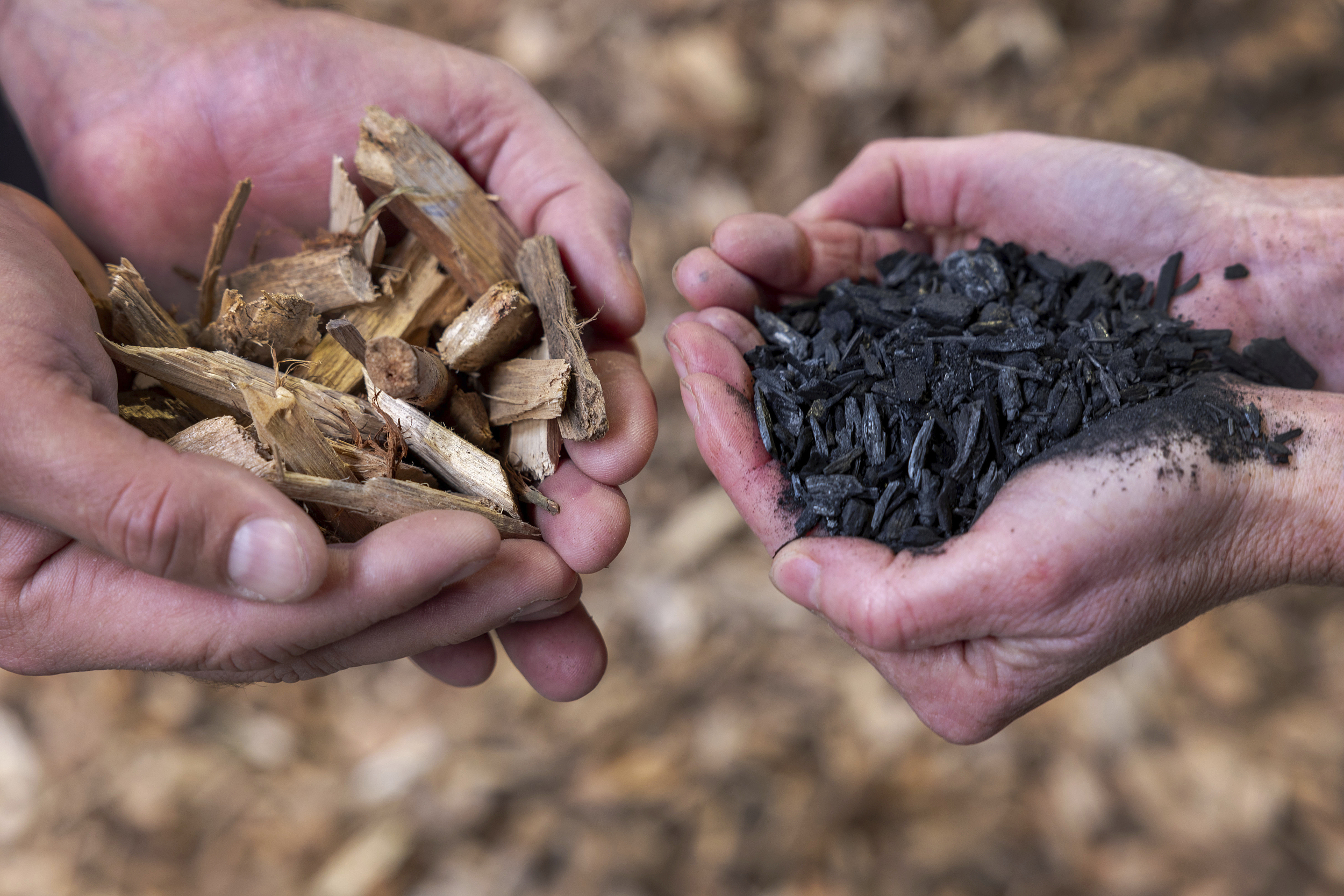Success in High-efficiency Biochar Production

A stem of fresh bamboo was broken into 5cm pieces and placed in a carbonization furnace. Half an hour later, black bamboo charcoal appeared. This world-first technology took place recently in the production workshop of Anhui Haofeng New Energy Technology Co., Ltd. in Wuhu city, Anhui province, east China.
"This is the first device in the world to produce biochar using biomass catalytic conversion technology, and the annual output can reach 50,000 tonnes," Xing Xianjun, professor at Hefei University of Technology (HFUT), told Science and Technology Daily, adding that biomass has finally been transformed into a sustainable resource through their efforts.
Large increase in conversion rate
In 2009, at an international energy academic conference, Xing and the participating scholars discussed that biomass is the most potential alternative to fossil energy.
"Biomass, which generally refers to the various organisms formed through photosynthesis, has significant energy and resource value," Xing said. Biomass can be continuously produced as long as there are conditions such as sunlight, water and carbon dioxide, he noted.
Biochar, prepared from biomass, can enhance soil fertility, improve water retention, and capture and store carbon, contributing to sustainable agriculture and environmental management.
However, the charcoal-making technology used for thousands of years through high temperature pyrolysis and low temperature baking leads to only 35 percent carbon conversion. This simple burning of biomass resources is inefficient and environmentally unfriendly, according to Xing. So he decided to do research into efficient utilization of biomass resources.
In 2011, Xing arrived at HFUT to lead the establishment of the Institute of Advanced Energy Technology and Equipment, starting research on the efficient preparation of biochar by catalytic conversion of biomass.
Facing many challenges, such as insufficient funds and a lack of qualified team members, Xing overcame them and persevered, building an alliance with a local chemical plant over time, and finally building a reactor there for research.
In July 2011, the world's first biochar prepared by catalytic conversion was produced in the Hefei Zhongyan Hongsifang Chemical Plant. "Even though it was only 500 grams of biochar, I was so excited," Xing said.
"In order to find the optimal process parameters of biomass carbonization, various experiments have been done tens of thousands of times," said Dr. Zhang Xuefei of HFUT, a research team member.
Finally, the team developed solid solution partial pressure technology, which increased the carbon conversion rate to 60 percent, meaning that apart from the nearly 40 percent inherent water content of the biomass, almost all of the remaining components are carbonized.
Finding 'critical energy point'
The longer the carbonization process, the higher the energy consumption. Therefore, Xing's team was dedicated to shortening the biomass carbonization process from billions of years to just a few hours.
In 2013, the team found that the quality of biochar was stable at the laboratory or on a small scale trail production. However, when the scale was largely expanded, the problem of uneven heat transfer and catalyst distribution of biomass appears, affecting the carbonization time and causing energy consumption to soar.
After thousands of experiments, they used both experimental and numerical simulation methods to find the "critical energy point," so as to design the optimal catalyst, leading to controllable preparation of biochar.
More than two years later, the team ushered in a new breakthrough — and carbonization time was reduced to 12 hours.
Since then, through theoretical analysis and simulation calculation, the team continuously optimized the process and gradually reduced the carbonization time to one hour.
Finally, the biomass carbonization process was reduced to 30 minutes, and the production process achieved almost zero emissions.
At the end of 2019, the world's first carbonization furnace with a daily output of 100 tons of biochar was completed, achieving the goal of preparing one ton of biochar in one furnace and an annual output of 5,000 tons of biochar.
From waste into treasure
The laboratory of Xing's team is actually an industrial workshop covering thousands of square meters, displaying carbonization furnaces developed by the team at various stages, as well as numerical control machine tools and other equipment.
"If you are committed to something, you must stick to it," Xing said. Over 10 years of research, he led the team to winning many awards and published hundreds of high-level papers. After the efficient preparation of biochar, they plan to use biochar to prepare new carbon-based materials.
"Theoretically, all biomass can be used as a material for preparing biochar. Among them, agricultural and forestry waste is a more ideal biochar raw material. Straw, wood chips and even sludge are also treasure," said Xing, adding that waste can become "black gold."
At present, as Xing's team has successfully developed the ultrasonic biochar activation device, substantial progress has been made in using biochar to produce energy storage products, such as graphite materials and negative electrode materials for high-performance lithium batteries.






